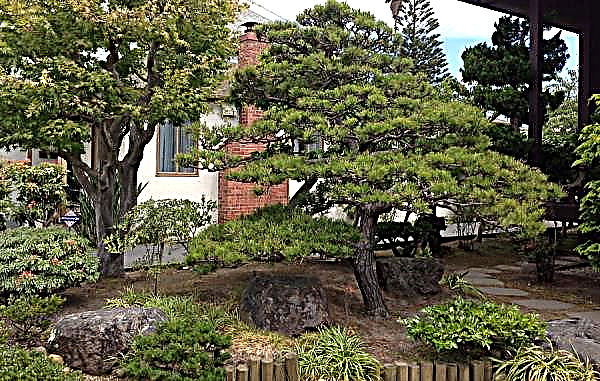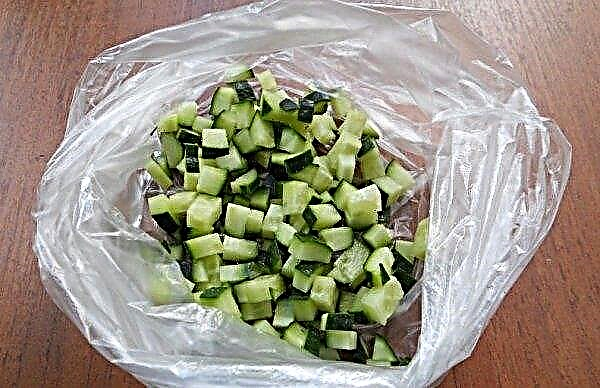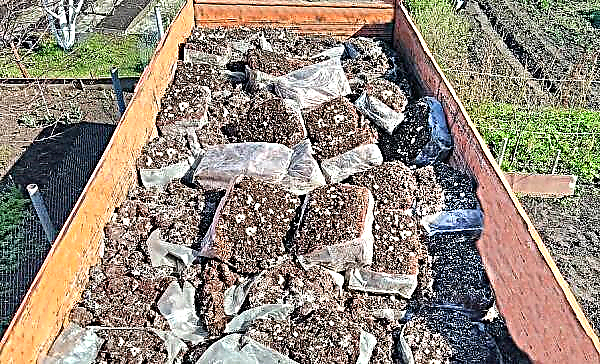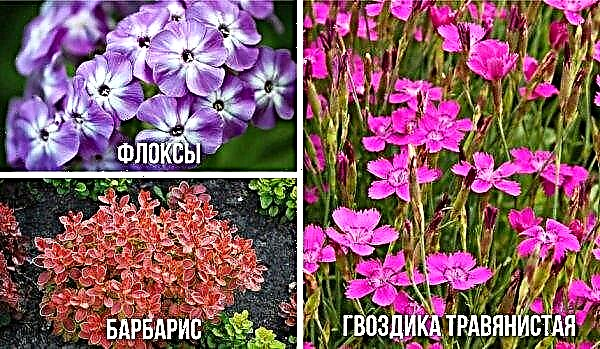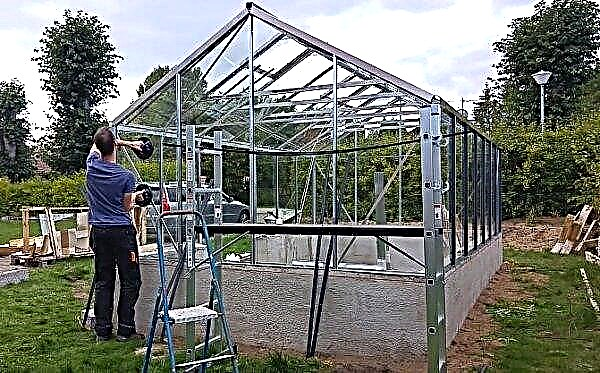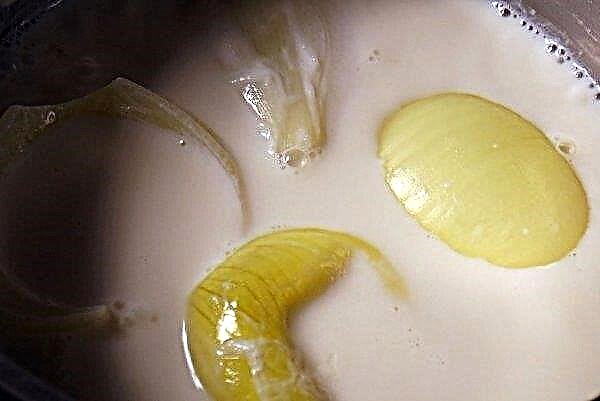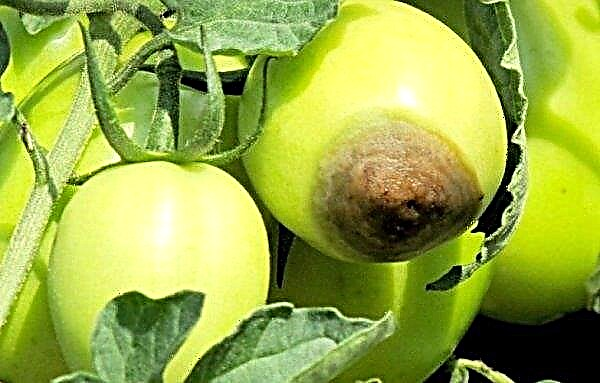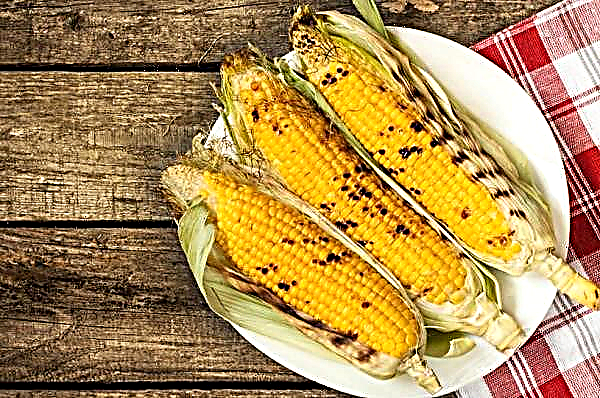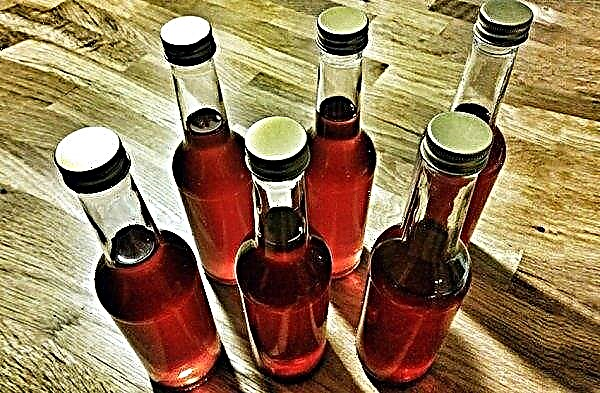Plant transplantation is considered one of the most important procedures for the maintenance of any indoor species. It makes it possible to renew the old soil, as well as eliminate the deficit of living space. Despite the fact that the procedure is simple, when transplanting a yucca, many forget that this tree-like plant requires special attention. In this article, we will consider in detail what is needed to transplant a yucca into another pot and how to properly maintain a home palm.
Yucca's need for a transplant
Yucca is a miniature tree-like plant, which is attributed to one of the most striking cultivated types of open soil in zones with a subtropical and tropical climate. Despite the fact that in the natural environment it is a powerful ligneous plant, the yucca grows quickly in a room pot, so they replace it quite often.
Did you know? Yucca leaves contain specific substances (aglycones, saponins), which are widely used in medicine. With their help, a variety of hormonal drugs used to treat humans are synthesized.
According to the general rules of agricultural farming techniques, transplanting of this species is carried out as necessary when the plant occupies the entire free volume of the pot. Most often, young specimens under the age of 5 are updated annually.
A large yucca over 5 years old is transplanted much less frequently. This is due to the fact that adult specimens have an established metabolism that promotes moderate growth and increase in plant volumes. In this case, the replacement of the pot is carried out no more than 1 time in 2-3 years.
Particular attention should be paid to transplants after purchase. Often sold in a flower shop plants contain in low-quality, temporary containers that are practically not suitable for their long-term cultivation, so after purchase they require immediate replacement in the shortest possible time.
In addition, the store substrate is often far from the ideal necessary for the successful growth of the yucca, in which case replacing the pot is not only necessary, but also a vital measure.
When can a yucca be transplanted?
You can transplant yucca throughout the entire growing season - from early spring to late autumn. However, yucca quickly adapts to new conditions if the procedure is carried out at the beginning or in the middle of spring.
At this time, the most active metabolism is observed in plant organisms, which directly favors rooting in new soil.
Concerning the transplantation of new plants among plant growers, opinions often differ. Many advise you to carry out the procedure within a few days after buying a yucca. Otherwise, poor-quality soil or the wrong size of the tank can inhibit its growth and immunity, in this case, all kinds of infections can not be avoided.
Opponents argue that placing the palm tree in new climatic conditions causes stress in it, so you need to resist the procedure until spring.

It is worth mentioning that it is necessary to transplant a palm tree susceptible to any infectious diseases and pests. In this case, the procedure is carried out urgently, regardless of age and time of year. During an emergency change of capacity, soil is also updated.
Important! For a year more than 3 times, it is not recommended to transplant a yucca, otherwise it can lead to disease and even death of the plant.
Transplant Preparation
Preparation for a palm transplantation begins a week before the procedure, at this time pre-treatment of the soil is carried out, in which it will develop over the next vegetative period.
A special substrate is suitable for growing this species, it is often prepared with one's own hand from a mixture of turf, leafy earth, river sand and humus (2: 2: 2: 2: 1). Sand can be replaced with perlite or vermiculite, which no worse give the substrate the desired lightness and friability.
Before planting, the soil must be sterilized. They hold this event in several ways:
- wetting with a 1% solution of potassium permanganate;
- frying in the oven for 20–25 minutes at a temperature of +125 ° С;
- heating in the microwave for 5-10 minutes (at maximum power);
- freezing in a freezer at -20 ...- 25 ° C for 2-3 days.
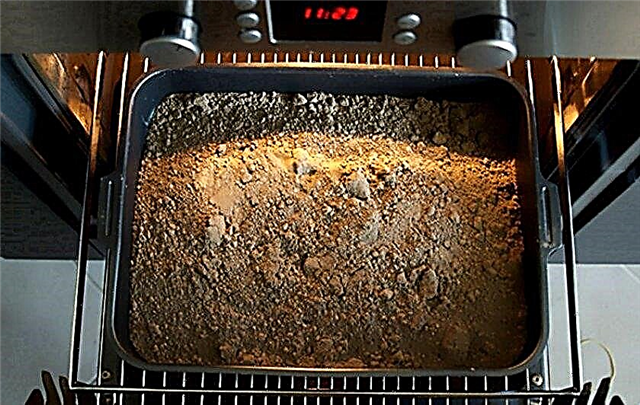
The sterilized soil is placed in a separate container and kept at room temperature for 7 days. This is necessary so that the soil regains its consistency, as well as microflora.
Palm trees are planted in deep garden containers; pottery made of ceramics or clay is best suited for these purposes. They are capable of absorbing moisture, which protects the yucca from waterlogging. Plastic containers are also suitable for planting, however, in this case, you need to more carefully approach the watering regime.
The bottom of the pot must contain a drainage hole, stagnation of moisture is detrimental to the plant, which is fraught with putrefactive lesions of the roots. A successful pot must necessarily be 2-3 cm in diameter larger than the volume of the rhizome. These indicators are strictly approached, since a large or excessively small capacity will lead to inhibition of the palm. Immediately before planting, the pot and drainage layer are sterilized (small pebbles, gravel or expanded clay). This is a mandatory measure, after replacing the pot, the yucca inhibits growth, sterilization helps to protect it from the causative agents of infections, to which it is especially susceptible during this period.
Immediately before planting, the pot and drainage layer are sterilized (small pebbles, gravel or expanded clay). This is a mandatory measure, after replacing the pot, the yucca inhibits growth, sterilization helps to protect it from the causative agents of infections, to which it is especially susceptible during this period.
Disinfection is carried out in two ways:
- heating in the oven (at +125 ° С, about 25 minutes);
- processing 1% solution of potassium permanganate, 70% alcohol solution.
How to transplant yucca at home: step by step instructions
In most cases, transplanting indoor plants is carried out according to the same method, regardless of the variety and variety of the flower. However, in the case of Yucca, this rule is not followed. This is due to the fact that the species has its own morphological features, requires special care, including transplantation.
Video: yucca transplant at home
Flowerpot filling
This is one of the main stages when replacing a pot, since it depends on how quickly and how long the plant will develop in a new vessel.
Spend it in two cycles:
- A drainage layer of gravel, expanded clay or pebbles should be placed in the pot. With the drainage component, fill the bottom of the vessel evenly with a 3-4 cm layer.
- After that, over the drainage, you need to densely pour the prepared soil with a layer of 4 cm.
Did you know? In the USA, yucca fibers are used to make denim. They give clothing mechanical strength and increase its durability.
Plant preparation
Before planting a purchased palm tree, it must be freed from the old soil. To do this, the flowerpot is placed in a deep container with water at room temperature for 1-2 hours. In water, the soil will completely get wet, which will help remove the plant without harm to the root system.
After the soil softens, you need to remove the palm tree along with the basal soil, and then gently wash it off in water. At the end of the procedure, the root system is dipped in a basin with clean water, where the remains of the soil are thoroughly rinsed.
If you are replanting an adult plant kept in room conditions for at least 1 year, you can not resort to laundering the roots. In this case, the transplant is carried out by transshipment, by transferring the yucca to a new pot with the old soil, or the old substrate is slightly shaken off, always leaving a basal lump.
Landing Yucca
The first 2-3 leaves are removed on the prepared plant, so the yucca does not spend energy on maintaining unnecessary parts of the body.
After that, the root system is carefully placed in a flowerpot and covered with soil, while you must always adhere to the following rules:
- deepening the stem by more than 2 cm is not recommended, as in this case the root may rot;
- the soil should not be heavily compacted during transplantation, as this can damage the delicate root system of the yucca;
- the upper border of the substrate must be lower than the edges of the pot by at least 2-3 cm, this will help to avoid water leakage from the pot during irrigation;
- after transplanting, the flowerpot must be watered, otherwise a Yucca moisture deficit cannot be avoided.
Important! Before transplanting on yucca, yellowing foliage must also be removed, otherwise a variety of putrid foci may develop on them, inhibiting acclimatization in the new container.
Post Care Features
A transplanted plant is sure to provide an optimal microclimate until it takes root. This is one of the main rules for a successful transplantation of a yucca, since otherwise it can fade and die over time, so the flowerpot is kept warm with minimal fluctuation in temperature and moisture.
Location and conditions of detention
As you know, this species came to us from the warm southern regions, so the most favorable conditions for it will be elevated temperature and moderate moisture. For this, the average temperature optimum should be provided in the room within +20 ... + 25 ° С, with humidity not more than 60%.
For this purpose, the flowerpot is placed on the southern windowsill, with abundant and continuous light. Direct sunlight is not terrible for this palm tree, but until it is fully rooted at noon, it is better to slightly shade it with a translucent curtain.
Video: Yucca Transplant and Aftercare
Watering
As mentioned above, the first watering of a room palm in a new pot is carried out immediately, in order to avoid drying out of the roots. Subsequently, the substrate is moistened as necessary, when a characteristic “dry crust” appears on the soil.
Often, watering is carried out no more than 2 times a week, introducing moisture in moderate portions. For this, approximately 1–1.5 liters of water is used for approximately 5 liters of soil. Water the flowerpots with clean, settled water at room temperature. They bring it under the root, avoiding irrigation of foliage.
Fertilizer application
Indoor yucca requires the first top dressing 10-14 days after transplantation. Further, the plant is fed throughout active growth (in spring and summer) once every 2-3 weeks. As fertilizers, you can use any mixture for decorative and deciduous species. Make them in a mixture with water with a concentration of half lower than recommended by the manufacturer on the package.
Important! If the palm tree could not be fully rooted before top dressing, the fertilizer of the flowerpot is postponed, otherwise this can cause inhibition of the plant.
Common transplant errors
Despite the fact that the Yucca transplant does not require specific knowledge and skills, many, especially beginning flower growers, make quite serious mistakes during this procedure. In most cases, this leads to prolonged rooting and acclimatization, but sometimes it can provoke the death of a palm tree.
The most common among them are:
- transplant in winter during rest;
- complete elimination of the old substrate from the roots (with the exception of transplanting from a store pot);
- non-compliance with the optimal microclimate before rooting;
- waterlogging of the substrate;
- planting excessively deep;
- neglect of fertilizing after replacing the pot.




